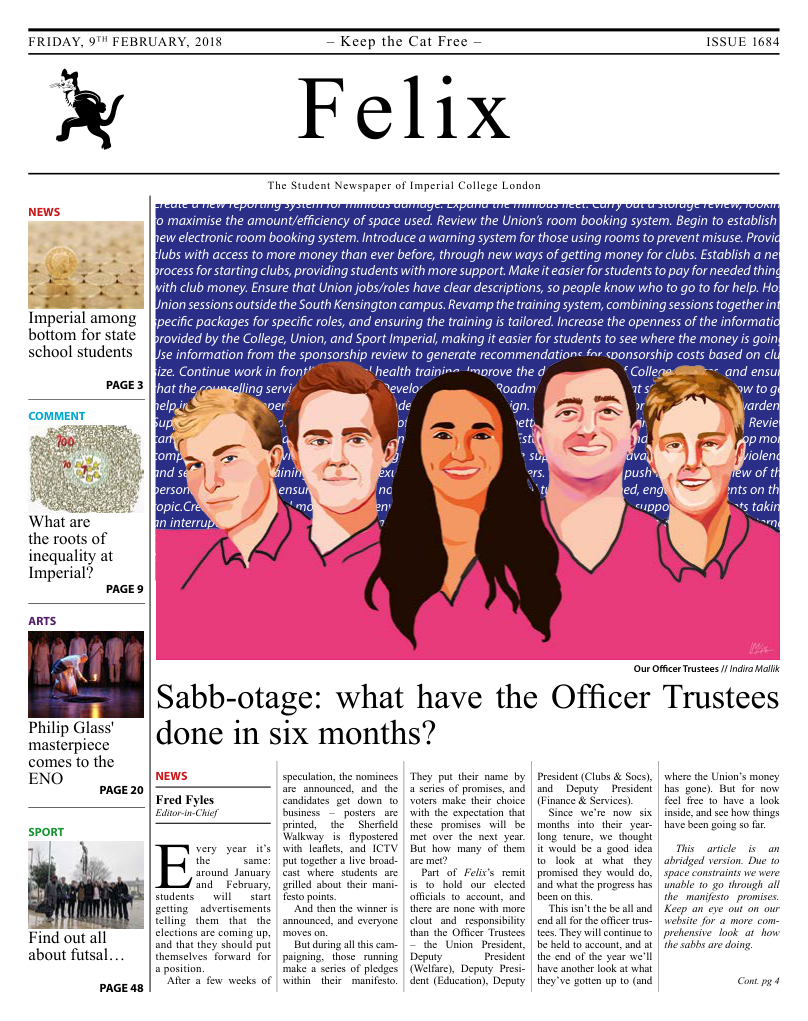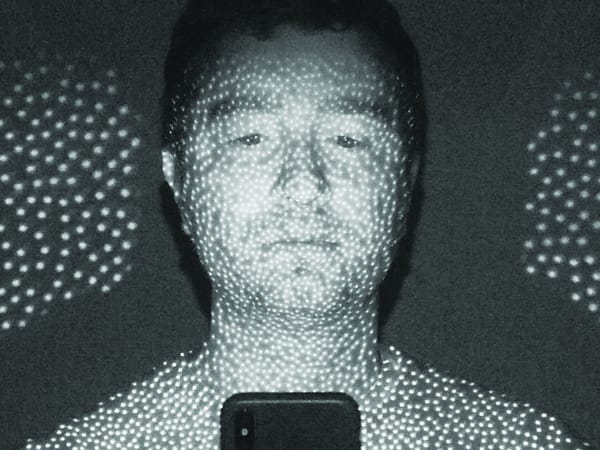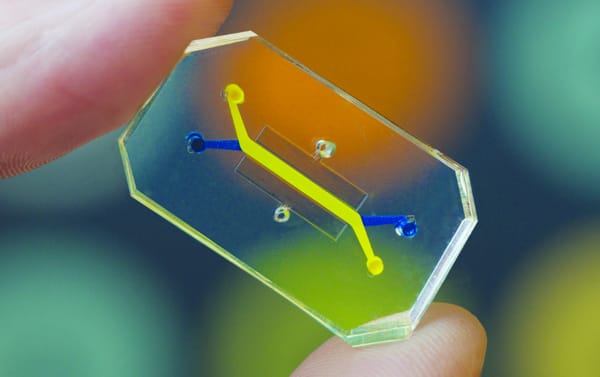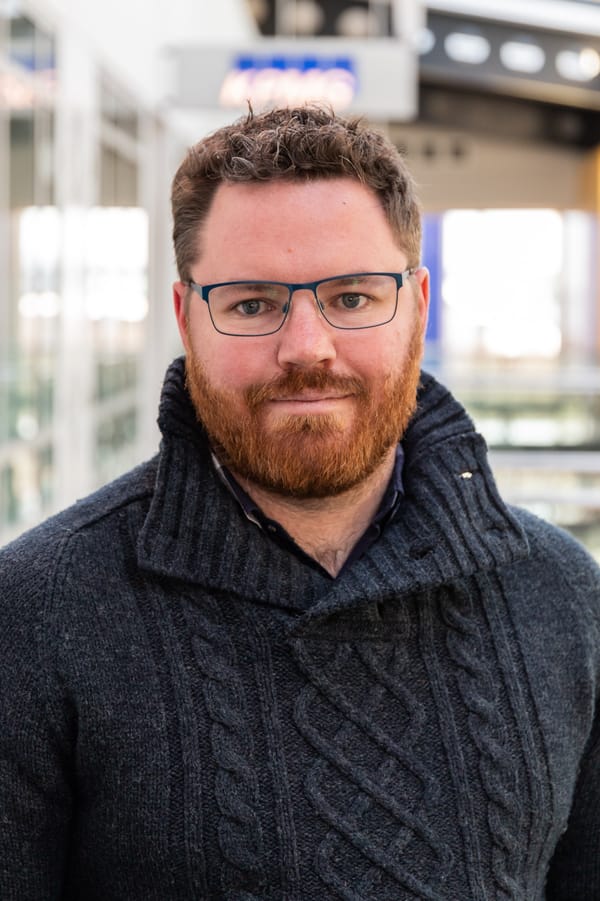IC Hack 18 – a first timer’s perspective
A demonstration of what is possible in 24 hours when young, talented minds and litres of Red Bull come together.

Let’s admit it, pizza at midnight is the real driving force behind the technological advances of the past few years. The Hackathon is essentially the culture that built the technological titans of today - Facebook, Google and Microsoft. And the annual hackathlon organised by DocSoc keeps up that spirit with IC Hack 18, which returned bigger and better than ever.
IC Hack 18 only saw the list of sponsors grow, with Microsoft being the title sponsor. Over 300 students, both from Imperial and other universities got together to come up with something cool, something neat, something awesome. The only condition was that they had only 24 hours to work on their projects. Some (including me) were participating for the first time, whilst others were regulars.
Gracing the opening ceremony was Theo Blackwell, London’s first Chief Digital Officer. He shared about his role in realising the Mayor’s ambition to make London the world’s smartest city, ensuring that the capital’s status as a global tech hub helps transform the way public services are designed and delivered, making them more accessible, efficient and responsive to the needs of Londoners.
At the end of the Opening Ceremony, after all the sponsors had shared about their companies and what they do, the hacking began.
The designated hacking spaces were all over Sherfield Building, and groups occupied the Senior Common Room, Junior Common Room and the Queen’s Tower Rooms. The energy started of really high - with a variety of music blasting, thanks to the crowdsourced music suggestions that was run using a Slack channel. The scale of IC Hack is hard to wrap your head around. How much drinks does it take to keep over 300 students awake and active for 24 continuous hours? Your guess is probably nowhere near the actual 2 tonnes of drinks that was brought in for the event. The amount of soft drinks is not as impressive when you start considering the thousands spent on food - the menu for the weekend included Nando’s, Domino’s Pizza, Pret A Manger and Farmer J. (Unconfirmed reports state that American Express called up one of the organisers to confirm that they did really use their credit card to spend over £2000 on Nando’s.) Also highly popular among participants were the Crepes, Waffles and Candy Floss stalls that set up on Saturday evening.
No less impressive were the several workshops that were held over the weekend - when participants weren’t busy trying to fix their code, they were kept busy by Microsoft teaching them how to use their Azure Cognitive Services APIs, or hearing from Ocado Technology (a Gold Sponsor) about Scala and functional programming. However, the most popular workshop didn’t involve any fancy APIs or even any code. Next Jump’s Sleep Class was by far the most popular workshop, with demand so high that they had to have a third run of the workshop to meet the demand. Next Jump staff walked participants through a 20 minute session of Yoga Nidra, which left participants feeling refreshed enough to keep them going for the rest of the long weekend. Later in the night, Morgan Stanley hosted a Bar Night for the participants in the Imperial College Union Bar for participants to take a break from squashing bugs to socialise and enjoy a free drink on them.
“The scale of IC Hack is hard to wrap your head around”
So where did all the food and the hundreds of Red Bull cans consumed go? It went into some awe-inspired projects that surprised both students and sponsors. The teams submitted the projects that they worked tirelessly for 24 hours on into different categories, and 2 finalists for each category were selected. Each finalist group then spent no more than 2 minutes presenting and demonstrating their idea to the audience and judges, and the winning team for each category was chosen at the end of the Hackathon. Taking home 3D Printers was FPS Galloper 3000, the winner for The Best Hardware Hack category. They used Microsoft’s Kinect to build a motion-controlled way to play Counter-Strike.
Winning the Best Newcomer’s Hack was Feedbacker, an app that uses Microsoft’s Emotion Recognition Service to gauge the excitement level of the audience during a lecture, using it to provide feedback to the lecturer. Winning The Best Web App category was Queen’s Treasure, which is a web-based interactive adventure game built with Queen’s Tower as it’s primary setting. Fascinatingly, all the art used in the game was drawn up by the team within those 24 hours, which was definitely a surprising feat. Winning the best Mobile Category App was SugarHoneyIceTea, a hilariously named app that helped individuals track their consumption by asking them to take pictures of the food and drinks that they consumed. Winning Best Game/Augmented Reality Hack and taking home Nintendo Switches was iSpyAI (which I was part of), a hyperlocal AR treasure-hunt game where multiple players would race to find objects in their immediate vicinity to gain points. There were also sponsor-categories, such as the TPP Greatest Impact on Healthcare category and the Accenture best Ethical/For Good Hack category.
The logistical sophistication and the level of organisation that IC Hack 18 required to run smoothly was well satisfied by DocSoc and it’s volunteers. Every event during the weekend started on time with very little delays, and the smallest details weren’t left untouched (toothbrushes, slippers and blankets were provided for participants who wanted to catch some sleep during the weekend). The cooperation of the sponsors and the impressive lengths DocSoc went to make this event smooth-running was evident from how enjoyable IC Hack was. As a first-time participant at IC Hack 18, I truly applaud the spirit behind the event, and I only wish that DocSoc organises more successful hackathons over the years.









